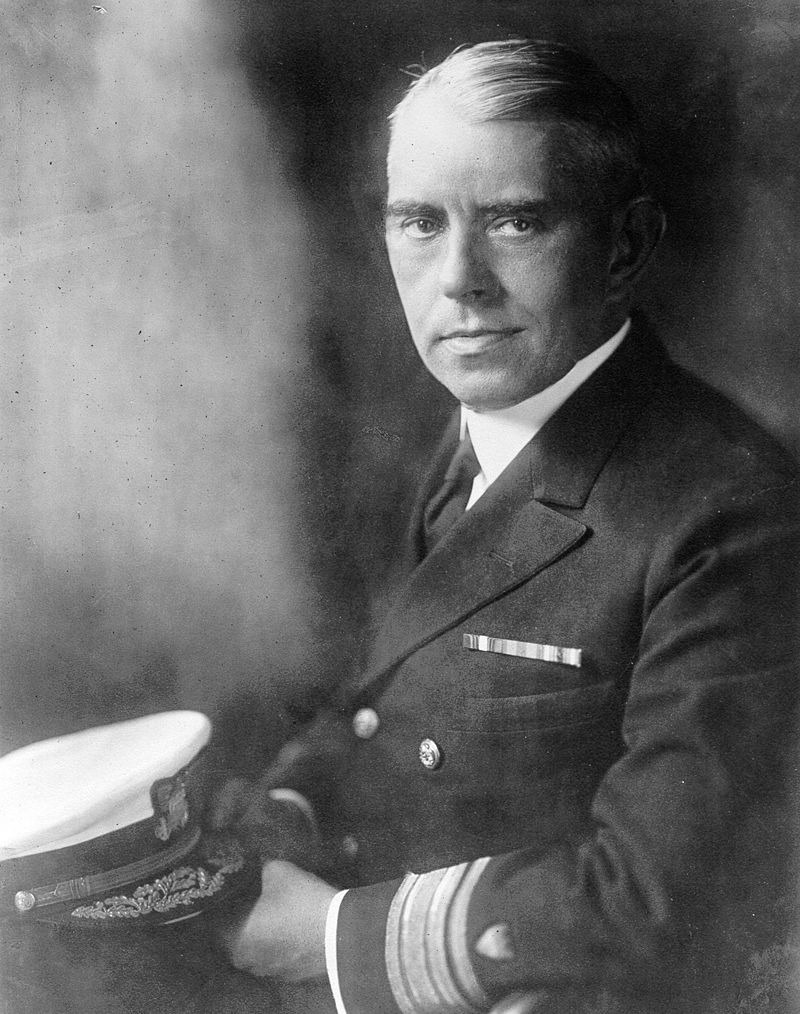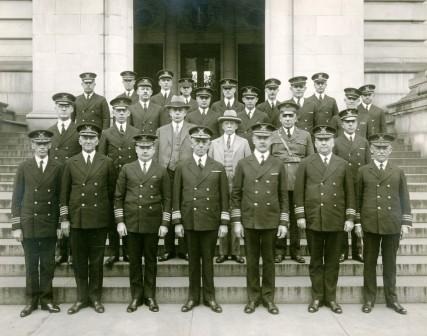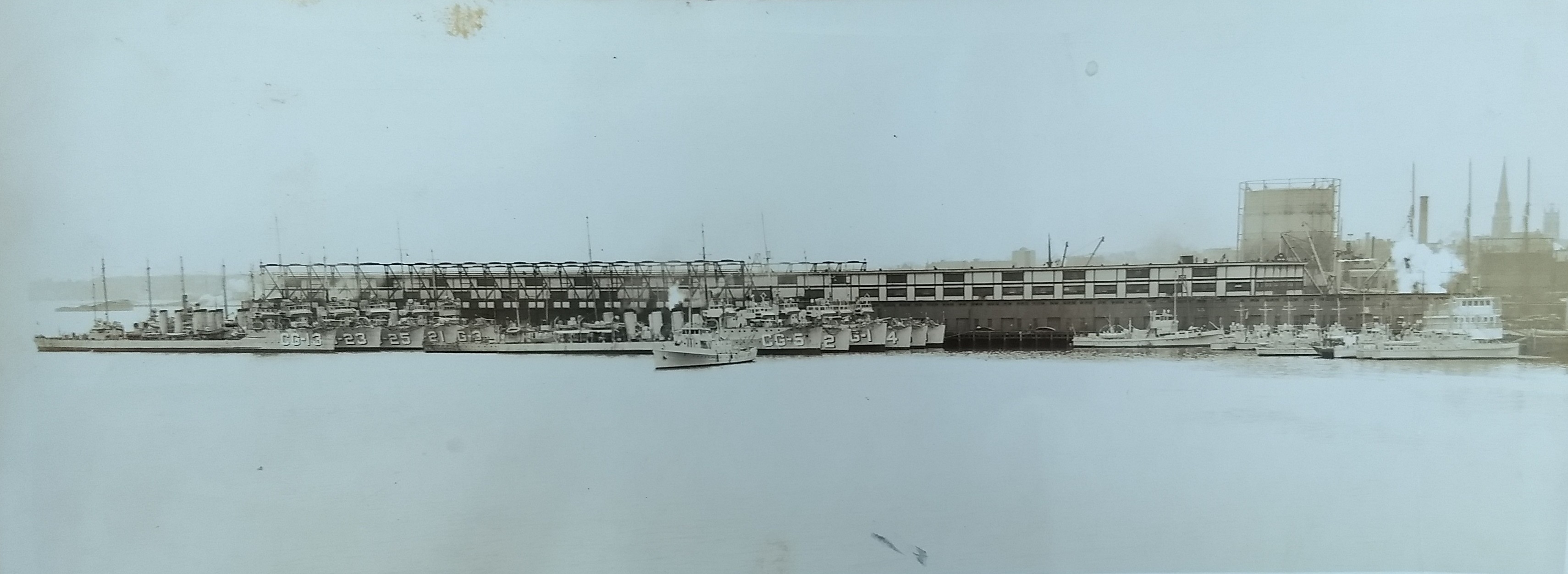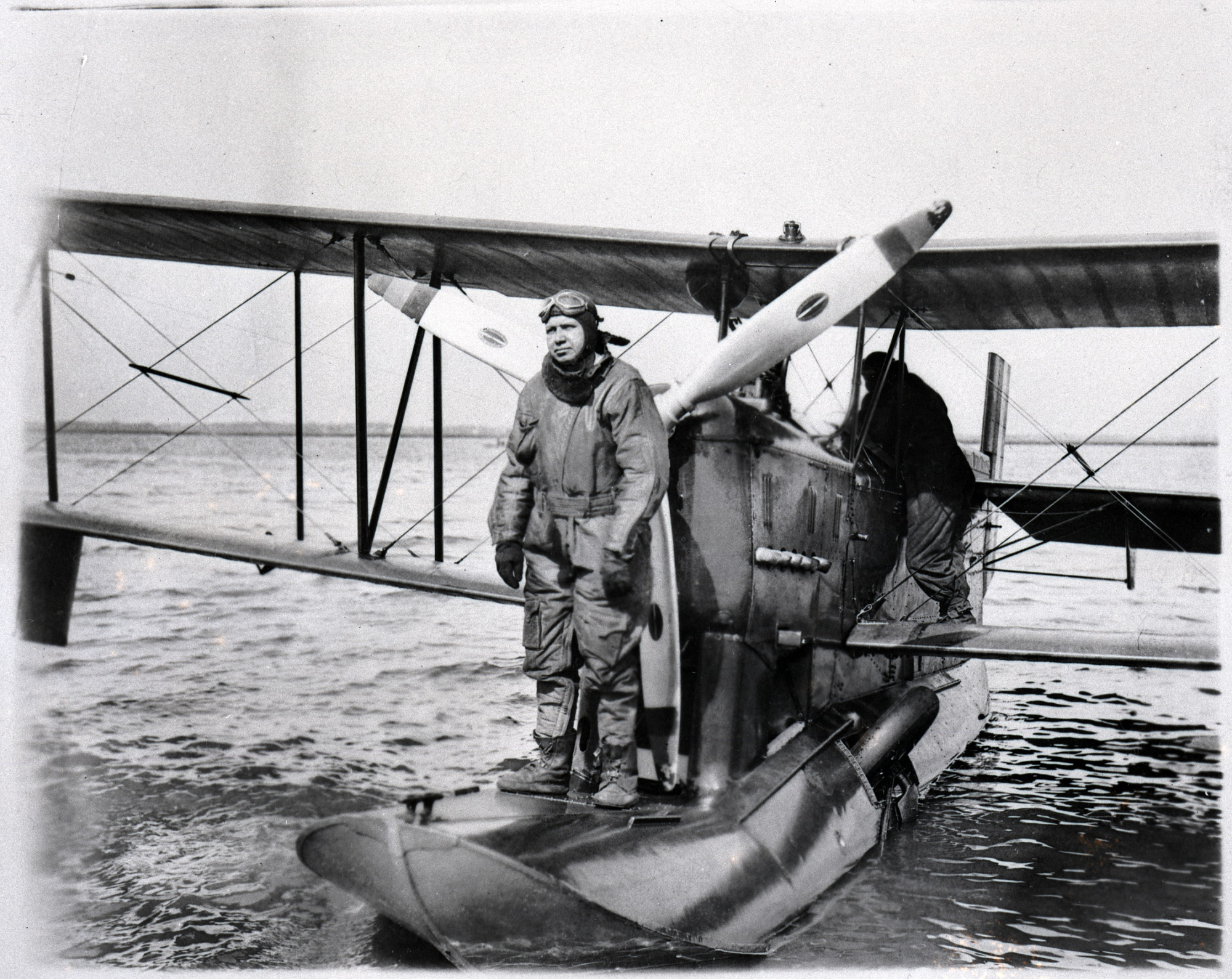"Frederick Chamberlayne Billard must rank with the greatest commandants of the Coast Guard. He had guided his service through a very trying period, presiding over an unprecedented expansion and attempting to deal with the herculean task of Prohibition enforcement without neglecting his service’s traditional responsibilities." - Robert Erwin Johnson, Guardians of the Sea
In 1932, Rear Admiral Frederick Chamberlayne Billard died of pneumonia at the age of 58. Promoted to Commandant at age 50, he was the youngest man to serve as Coast Guard Commandant in the history of the service. He was also the only Commandant to receive the Navy Cross Medal, one of only two commandants appointed three times, and the only one to die while in office. As Commandant, he oversaw the largest and fastest peacetime expansion in Coast Guard history.
Born in Washington, D.C., on September 22, 1873, Billard was appointed a Revenue Cutter Service cadet on January 11, 1894. He received his early training on the practice ship, USRC Chase and was appointed a Third Lieutenant in the Revenue Cutter Service on April 27, 1896. During the Spanish-American War, Billard served on the cutter Corwin attached to the Pacific Fleet. During the rest of his career, he would serve on all U.S. coasts and territories of Puerto Rico, Hawaii, and Alaska.

Billard was a popular leader and educator. From 1900 to 1905, he returned to the training ship Chase as ship’s navigator and Revenue Cutter Service Academy instructor. In 1914, he would return to the Revenue Cutter Service Academy to serve as superintendent. He remained there through the 1915 transition from the Revenue Cutter Service to the U.S. Coast Guard and the Coast Guard Academy. In 1921, Billard became superintendent of the Coast Guard Academy at New London, Connecticut. Billard was commended by the commandant for his oversight of cadet corps training and education.
In 1914, Billard commanded the cutter Androscoggin in searching for and towing into Boston Harbor the derelict British steamer Templemore, which not only removed from the trans-Atlantic steamship lanes the largest and most dangerous derelict up to that time but restored to its owner property worth millions of dollars. His was commended by the Secretary of the Treasury and the Committee of Lloyds which expressed its admiration for the “highest degree of skill, efficiency, and tenacity of purpose.”
Billard was beloved by officers and enlisted man alike. As commanding officer of the Onondaga on the stormy night of February 20, 1918, he successfully removed and brought safely to shore every officer and member of the crew of the British steamer Veturia, which ran aground on Hatteras Shoals, North Carolina. Most striking about this incident was Billard’s modest official report except his high praise of the Boatswain’s Mate whom he placed in charge of the boats engaged in the rescue.

As early as February 1917, Billard requested “duty afloat in the event of war.” In late summer 1918, he shipped out to Europe to command the USS Aphrodite, then operating out of Brest, France. For his command of Aphrodite, he received the Navy Cross Medal with the citation “For distinguished service in the line of his profession as commanding officer of the USS Aphrodite engaged in the important, exacting and hazardous duty of transporting and escorting troops and supplies to European ports through waters infested with enemy submarines and mines.” It was the highest military honor received by a future commandant.
In May 1919, Billard returned from Europe to serve as aid to Coast Guard commandant William Reynolds. He had already served as aid to Captain Worth Ross, Chief of the Revenue Cutter Service from 1906 to 1911. On January 11, 1924, exactly 30 years after receiving his commission as an ensign, he was deep selected to succeed William Reynolds. In one day, Billard climbed from the officer rank of Commander to Rear Admiral to become the Coast Guard’s sixth commandant. He had just turned 50 a few months earlier.

In October 1919, Congress passed the 18th Amendment to the Constitution and, in 1920, the Volstead Act, which enforced the 18th Amendment. This began the so-called “Noble Experiment” of Prohibition and, in America’s territorial waters, including lakes, inland waterways and thousands of miles of coastline, the U.S. Coast Guard was its lone maritime enforcer. By 1922, the Federal Prohibition Commission counted hundreds of “mother ships” hovering off U.S. shores in “Rum Row” with up to 60 off the Jersey Coast alone. By 1923, then Coast Guard Commandant William Reynolds admitted his cutters could prevent “only a small part” of the onrush of illegal booze, which was “entirely unprecedented in the history of the country.”
In 1924, Congress agreed to the largest peacetime funding increase in Coast Guard history. During Billard’s first years as commandant, the service’s budget mushroomed from $9.3 million in 1923 to over $24 million in 1927. Beginning in 1924, the Coast Guard’s small boat fleet also mushroomed. The service re-purposed over 450 seized rumrunning boats for apprehension purposes and a fleet of 103 36-foot Picket Boats were built for fast inshore work. Later, another 550 38-foot picket boats were built to replace the 36-footers. To help support this massive, small-boat fleet, the Coast Guard acquired six floating bases placing them in strategic locations along the East Coast.

The increased funding also paid for a huge new cutter inventory. With over 200 cutters, the wooden 75-foot “Six Bitter” class was the largest cutter class in Coast Guard history. Most Six-Bitters were operational by 1925 accounting for half the service’s personnel increases at that time. The service also built six 78-foot patrol boats and 13 100-foot steel-hulled cutters. Known as “Buck-and-a-Quarters,” 33 125-foot cutters were built in the late 1920s. Designed to track mother ships, 18 165-foot “B”-Class cutters were completed by the end of Prohibition. Commissioned in the late 1920s, ten 250-foot “Lake”-Class high-endurance cutters were built to serve long periods at sea. In addition, the Navy transferred to the Coast Guard 750-ton and 1,000-ton destroyers and some of its famed “Four-Stacker” destroyers. These destroyers were the first Navy warships manned entirely by Coast Guard crews.
Billard oversaw this rapid expansion and modernization. In addition to an expanded fleet of 320 cutters and destroyers and nearly 700 small boats, Billard established a permanent Coast Aviation branch with two new air stations and new aircraft. During his tenure, Coast Guard personnel levels more than doubled from 4,000 men to 10,000, and the service’s administrative organization expanded dramatically to support this growth in assets and personnel. Billard also presided over a new Coast Guard Office of Intelligence, saw the construction of a brand-new campus at New London to host the Coast Guard Academy and led the drive to install an impressive Coast Guard monument at Arlington National Cemetery.

On May 17, 1932, while still in his prime as Coast Guard leader, Billard died in office. Cause of death was pneumonia, and, during his World War I service, an overseas hospital had diagnosed signs of tuberculosis, which may have contributed to his early and unexpected death. When he passed, he was six years younger than the previous commandant at the time of retirement. Billard was laid to rest at Arlington National Cemetery with full military honors and cannon salutes from cutters anchored in the Potomac River.
Billard’s stewardship of the Coast Guard provided a model of rapid expansion for the challenges of World War II and paved the way for the Coast Guard’s vital role in that conflict. All the while, he was respected, beloved, and admired by all who knew him. In his tribute message to the Coast Guard, Treasury Secretary Ogden Mills wrote, “Since 1924 [Billard] has been commandant of the Coast Guard during its period of greatest expansion and development of its highest efficiency. He was not only a sailorman in every sense of the word but was an executive of the highest order.”
-USCG-